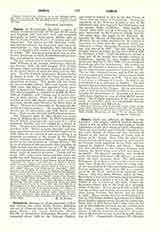

Samogitia, Diocese of (SAMOGITIENSIS), a Russian diocese, also called Telshi (Telshe), including the part of Lithuania lying on the Baltic; this Lithuanian district, also named Schmudien (Polish, Zmud) or Schamaiten (Lithuanian, Zemaitis), was conquered about 1380 by the Teutonic Knights, and ceded to Poland in 1411 by the first Treaty of Thorn after the defeat of Tannenberg. During the supremacy of the Teutonic Knights a part of the inhabitants had been baptized, but Christianity had not become firmly established. King Jagello of Poland (1386-1434) traveled through the country, gave instruction in the Christian religion himself, and called upon the people to be baptized. He founded the Diocese of Samogitia with its see at Miedniki, his act being confirmed by the Council of Constance in 1416, and the cathedral, which was dedicated to Saints Alexander, Evantius, and Theodul, was erected in 1417. The first bishop was a German named Matthias; he was succeeded in 1421 by Nicholas, a Pole. Until the sixteenth century a large part of the people were strongly inclined to heathenism. Among the later bishops should be mentioned Melchior I (1574-1609), who reestablished Catholicism after the Reformation. His predecessor George III founded a seminary for priests. There was an uninterrupted succession of bishops until 1778. The see then remained vacant, and in 1798 the diocese was suppressed, after it had fallen to Russia in the third Partition of Poland in 1795. Up to that time it had been a suffragan of Gnesen. In 1849 it was reestablished as a suffragan of Mohilev. The first bishop of this second period was Matthias Wolonzewski. The see is Kovno on the Njemen. By the convention made in 1847 between Pius IX and Russia the diocese includes the governments of Courland and Kovno, which have together an area of about 26,219 square miles. The Catholic population of the two governments is 1,258,092; there are 426 parishes and dependent stations, and 600 priests.
KLEMENS LOFFLER

